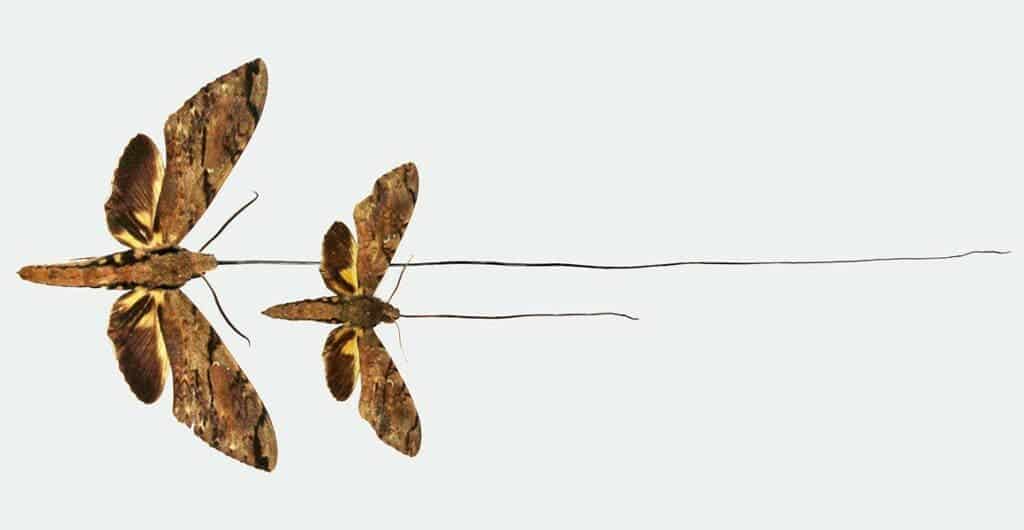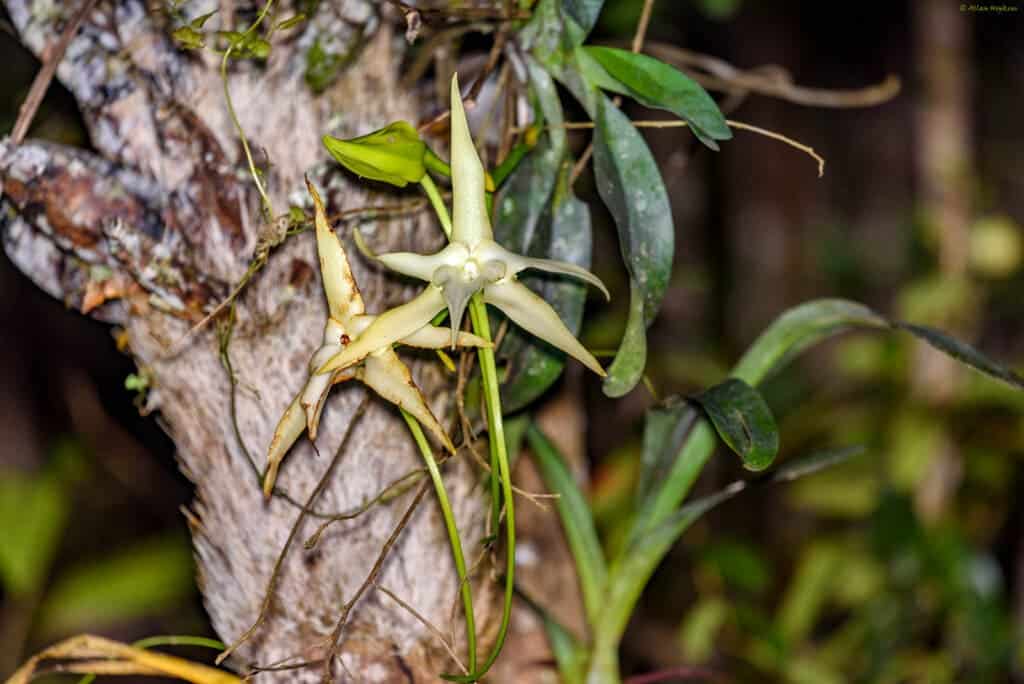The hawkmoth from Madagascar, whose existence was predicted by Charlies Darwin in the 19th century, has now been officially recognized as a new species, Xanthopan praedicta. It has the longest tongue of any insect, measuring up to 30 centimeters, and is the only can that can reach the bottom of the nectar tubes of the Madagascar’s star orchid.

The moth was sort of discovered before it was even discovered. Darwin predicted its existence in 1862 when he saw the shape of the Madagascar start orchid (Angraecum sesquipedale) and said: “Good heavens, what insect can suck it?”. Two decades later, in 1903, the moth was described by Karl Jordan and Walter Rotschild as a subspecies of the Morgan’s sphinx mox.
But that is no longer the case. David Lees, curator of months at the London’s Natural History Museum, and a group of researchers looked at the Madagascar moth’s genetic and physical characteristics and concluded that it’s not a mere subspecies. In their new study, they argue that the moth is a full species in its own right, Xanthopan praedicta — a discovery that would probably make Darwin happy.
“Imagine my excitement as I unrolled and measured the proboscis of a male Xanthopan in the Madagascan rainforest, realising that it was probably the global record holder,” Lees said in a statement. “The taxonomic change we now propose finally gives long-deserved recognition, at the species level, to one of the most celebrated of all Malagasy endemics.”
A brand new species
There are hundreds of species of hawkmoths throughout the tropics, but Darwin’s hawkmoth is only found in Madagascar. Its life is closely connected with the plants that live there, including the star orchid. They influence each other’s biology, with the tongue of the moth increasing in length in line with the long nectar tube of the orchid.

The extraordinary length of the tongue makes the insect is vulnerable to predators such as bats and lemurs. To prevent this, the moths unroll their tongue only when they approach the orchid and roll it back up as soon as they finish up their meal.
Lees and his team placed about 100 specimens of the moth from Madagascar in a bath of water overnight to soften the tongue, which allowed them to measure its length. Going from 15 to 28.5 centimeters, the tongues were too long to store extended, so the researchers rolled them back in by locating the moth’s head back into the water.
The team found 25 morphological differences between the Madagascan and the African hawkmoth, including significant variations in the shape of the male and female genitalia, wing shape, and color patterns. “The underside of the hawkmoth from Madagascar is pinkish, while the underside of the hawkmoth from Africa is whitish or yellowish’, said Lees.
The tongue length was also different between the two species, with the tongue of the Madagascar moth being 6.6 centimeters longer on average. The researchers also looked at DNA differences and found that the Madagascar moth is at least 7.6% divergent from its African counterpart, which is more than enough to justify the recognition of a new species, the researchers said.
The study was published in the journal Antenor.



